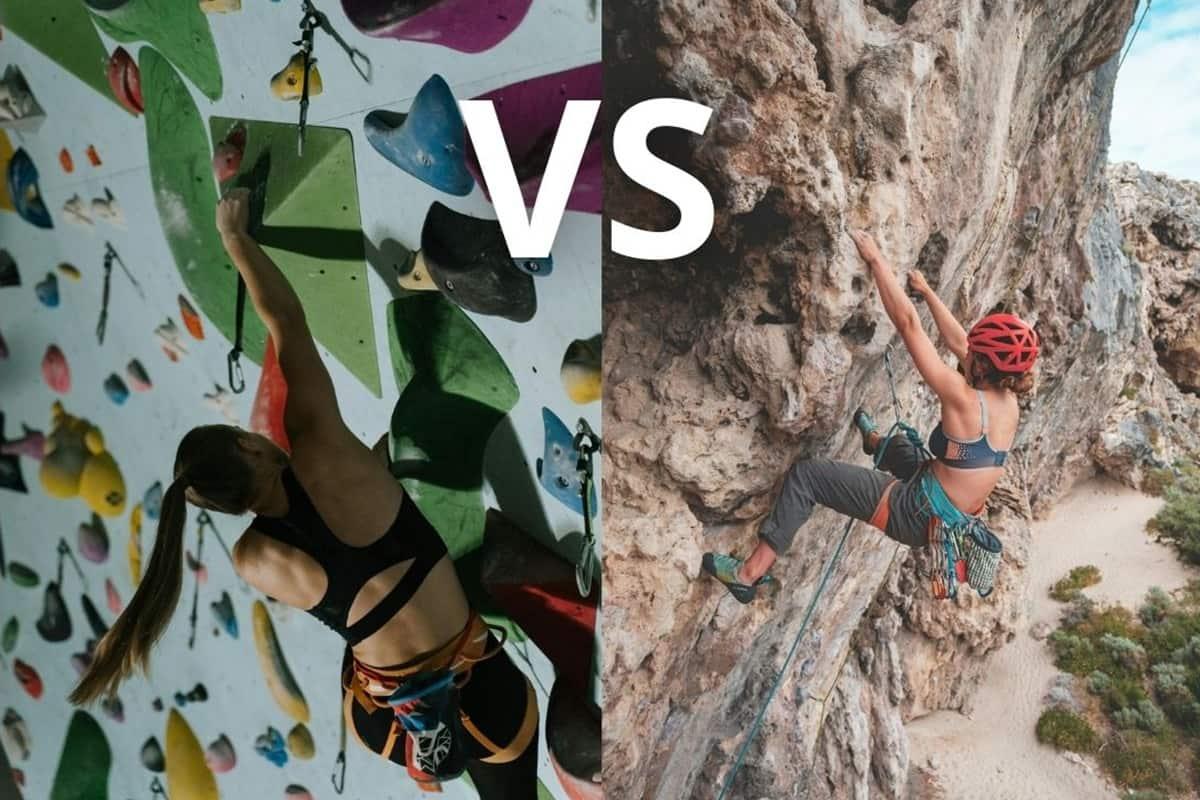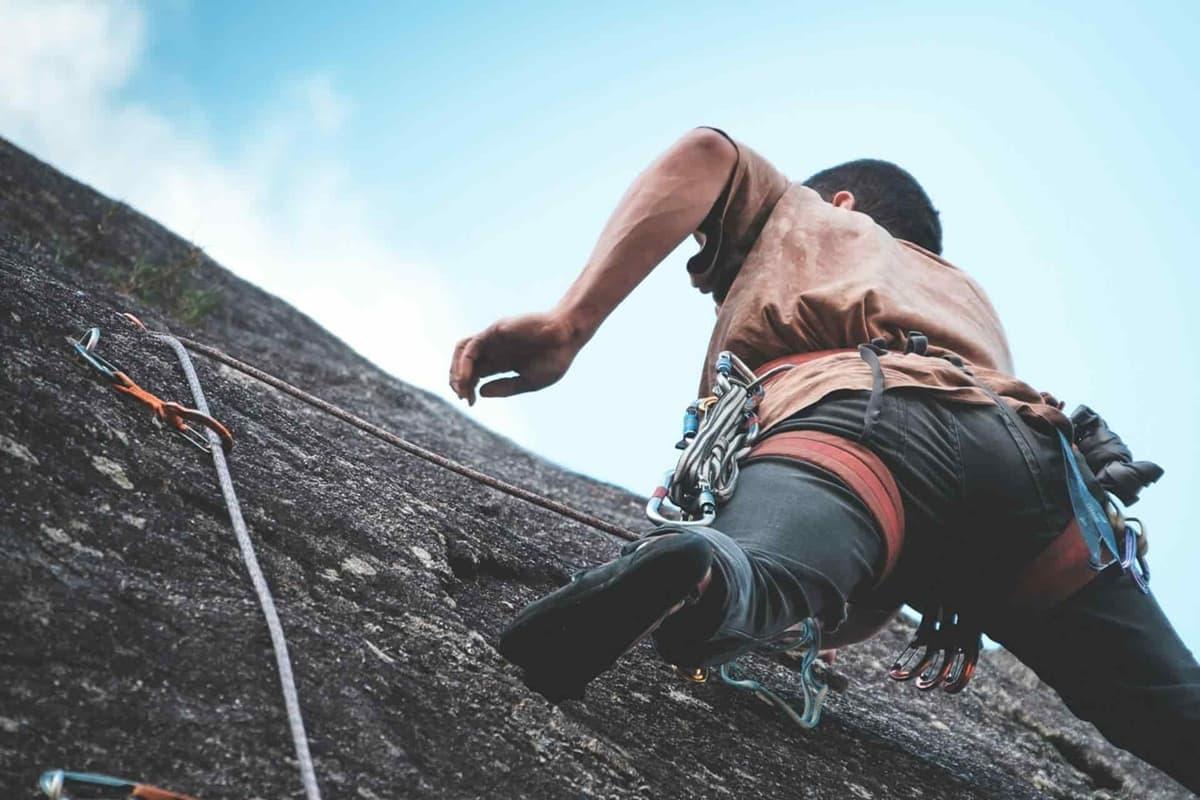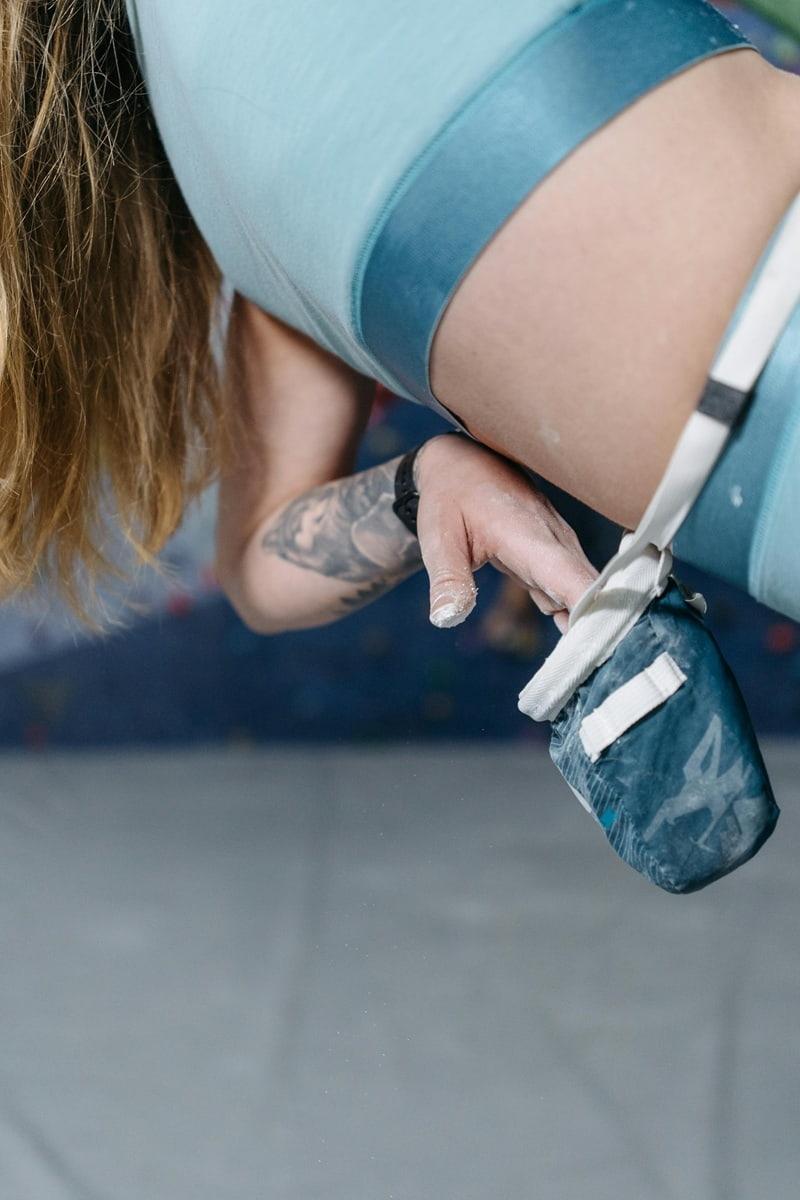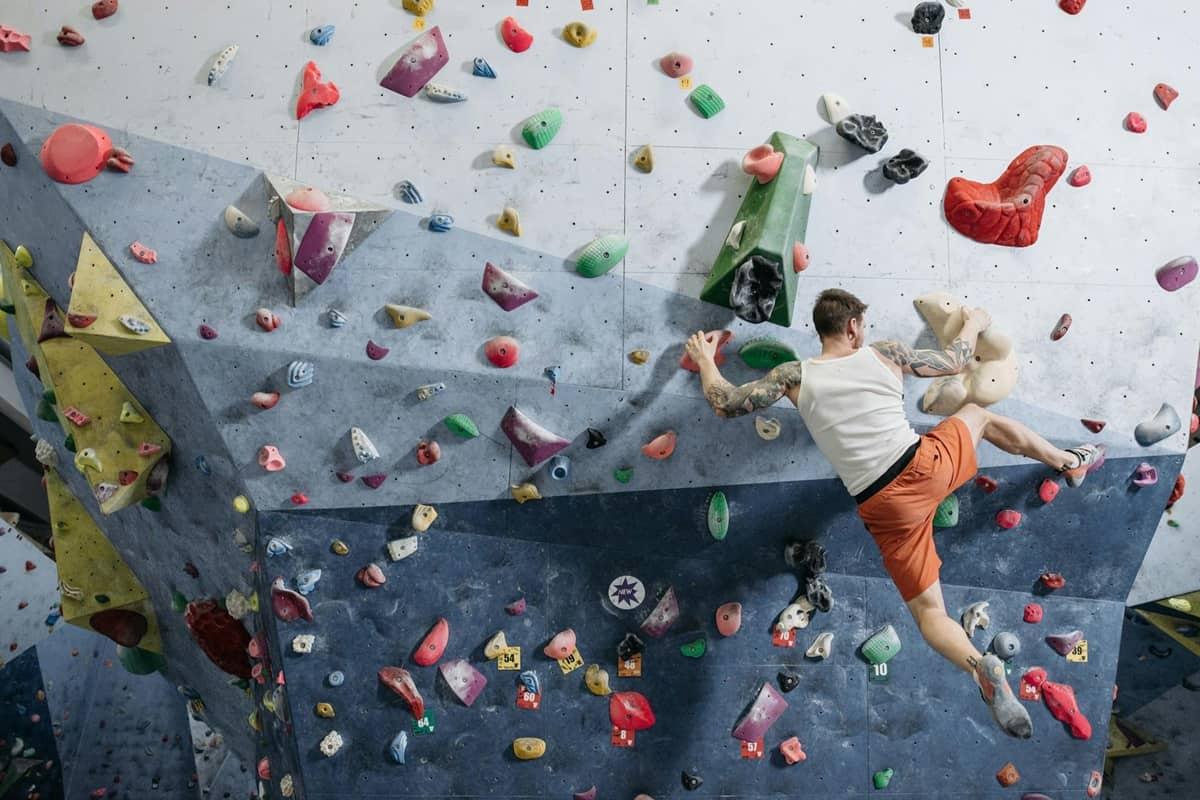
Contents
- Environment, Holds and Grip: Indoor Climbing vs Natural Rock
- Basic Techniques for Getting Started: Balance and Footwork
- Movements and Specific Techniques: From Bouldering to Multi-Pitch Climbing
- Safety and Belaying: Key Differences to Know
- Training and Technical Drills to Improve Your Climbing
- Aid Climbing and Other Specialised Practices
- Whatever the Discipline, Choosing the Right Gear Matters
- FAQ – Climbing Technique and Progression
Indoor and outdoor climbing are two sides of the same sport, yet they offer very different experiences. Whether you're a beginner discovering the world of artificial walls or an intermediate climber thinking of transitioning from indoor bouldering to outdoor crags, it’s important to understand the differences between these disciplines. In this guide, we’ll explore the contrasts in environment, technique and safety between climbing on an indoor wall and on natural rock. You’ll also learn how to progress in climbing by tailoring your training to these varied settings, while learning to respect your own limits. The goal is to provide a comprehensive guide to help you improve your climbing technique and become a well-rounded climber, confident both indoors and out.
Environment, Holds and Grip: Indoor Climbing vs Natural Rock
Environment and Types of Holds
In indoor climbing, brightly coloured resin holds make route reading easier thanks to clearly defined paths. The artificial surface is designed to provide consistent grip, unaffected by weather conditions.
Outdoors, by contrast, there are no visual markers to guide the climber. One must learn to ‘read the rock’ in order to identify natural holds. Grip varies depending on the type of rock and the weather, requiring adaptability and experience.
Equipment and Gear
In indoor climbing, all equipment and safety features are pre-installed (closely spaced anchor points, mats). Outdoors, anchor points are often more spread out, and climbers may need to place their own protection (cams, slings). The gear required is more extensive (rope, quickdraws, helmet, crash pad, guidebook).
Atmosphere and Mental Commitment
The atmosphere in indoor climbing is social and reassuring, with encouragement and comfort. On a crag, direct contact with nature brings a deeper psychological engagement due to exposure and unpredictability. Indoor climbing is therefore more predictable and structured, while outdoor climbing demands greater autonomy and adaptability.
Basic Techniques for Getting Started: Balance and Footwork
Whether you're climbing indoors or outdoors, the fundamentals of beginner climbing technique remain the same. Mastering these basics will help you move more efficiently and effortlessly – the best way to progress. Here are a few key principles to keep in mind:
- Use your legs before your arms: your legs support most of your body weight. Push with them to relieve your arms and relax your arms whenever possible. Avoid pulling yourself up with your hands before you've moved your feet higher.
- Keep your hips close to the wall: keeping your hips against the wall improves balance and reduces strain on your arms. Stay ‘facing the wall’, especially on slab routes, to optimise grip and stability.
- Place your feet precisely: position your feet carefully, using the tip or big toe of your climbing shoe. Opt for small, successive steps to manage your energy. Avoid swinging feet – regain stable footing after each move.
By applying these golden rules, you'll quickly notice a clear improvement in movement efficiency. Technically speaking, these basics are often summarised as: straight arms, bent legs, weight on the feet. Of course, every situation may require adjustments, but these principles apply in most cases – whether you're on an indoor wall or natural rock.
When you maintain three points of contact (for example, two feet and one hand), your body is supported by an imaginary triangle of balance. This principle of the triangle of support ensures your stability as long as your centre of gravity stays within it. Always try to maintain three points of contact whenever possible – never remove more than one hand or foot at a time, unless you're making a deliberate dynamic move.

Movements and Specific Techniques: From Bouldering to Multi-Pitch Climbing
As you progress, you'll encounter more complex movements that expand your repertoire of climbing techniques. Some advanced climbing techniques are universal, while others are especially relevant outdoors due to the shape and texture of natural rock. Here are a few notable examples:
- The Lolotte: this move involves rotating the hip and knee inward to bring the pelvis closer to the wall in order to reach a distant side hold. Very useful in bouldering or overhangs, it requires flexibility and coordination.
- Stemming: used in cracks or dihedrals, this technique relies on opposition between hands and feet to climb where there are few obvious holds. Common on crags, it demands good balance control and can be quite physical.
- Jams and Locks: inserting your knee, fingers or hand into a crack to wedge yourself in and rest. This is an essential skill in traditional or multi-pitch climbing but rarely used indoors, except on specially designed walls.
In addition to these movements, bouldering (short climbs without a rope) often involves dynamic, explosive techniques: dynos, fast movements where you let go for a brief moment. In contrast, route climbing (with rope, especially on longer routes) emphasises endurance and energy management: you climb more slowly, take rests on good holds to catch your breath, and plan the next sequence. These two approaches complement each other: bouldering helps you build strength and coordination, while longer routes develop stamina and strategy.
Safety and Belaying: Key Differences to Know
Whether you're climbing indoors or on a crag, climber safety relies on the same basic principles: proper belaying, correct rope tying, and following safety guidelines. However, some technical aspects differ between settings.
- Indoors, safety is simplified: top-rope anchors are pre-installed, quickdraws are already placed for lead climbing, and staff are often present to check basics such as knots or spotting in bouldering areas. The environment is stable and predictable.
- Outdoors, lead climbing is the standard: you place your own quickdraws, manage the rope and belay setups, know how to build an anchor, abseil, or belay a second climber. These skills require proper training. The butterfly knot, for example, is useful for self-securing or isolating a damaged section of rope.
- Another key difference is passive safety. On rock, wearing a helmet is strongly recommended (and mandatory in some clubs) to protect against falling rocks or dropped gear. Indoors, helmets aren't used, as there’s no overhead risk. In natural settings, good habits are essential: always check anchor integrity before trusting a rusty bolt, avoid having two parties climb too close together (to prevent rope tangles or falling gear), and so on. If you're a beginner, it’s highly advisable to start outdoor climbing through an introductory session with a qualified instructor or club. They’ll teach you how to lead safely, build anchors, and handle unexpected situations. Climbing autonomy develops step by step – don’t rush the process to ensure you always climb safely.

Training and Technical Drills to Improve Your Climbing
Whether indoors or outdoors, climbing is a constant learning process. That said, the climbing gym is a fantastic tool for structuring your training and focusing on specific aspects of your technique. To truly improve your climbing, nothing beats repetition and exposure to a variety of climbing scenarios. Here are some drills and training tips:
- ’Silent feet’ climbing: regularly repeat easy routes while making sure to place your feet silently. This improves the precision of your footwork and your balance. It’s a very effective climbing technique drill for both beginners and experienced climbers.
- Traverses and balance: practise horizontal traverses in your gym, focusing on good hip positioning. The goal is to stay balanced even without a rope, maintaining a stable triangle of support. This develops your core strength and improves your grip on sloping or poor holds.
- Themed routes: pick a route slightly below your maximum grade and apply a technical constraint, such as climbing with straight arms whenever possible, using only certain types of footholds (e.g. only outer edges, no heel hooks), or avoiding specific types of handholds. These playful exercises force you to explore new movements and break out of habitual patterns, expanding your range of technique.
- Targeted strength training: alongside climbing, include climbing-specific strength sessions. For example, hangboard or pull-up bar sessions to build finger and arm strength (pull-ups, lock-offs, etc.), or core work to help keep your hips close to the wall on overhangs. But be careful not to let strength training replace technique: the goal is to climb better, not just build muscle. A strong muscle used poorly won’t get you any higher.
Consider following a structured climbing training plan suited to your level. Many coaches and federations offer detailed plans. A programme can help you organise your weekly and monthly sessions by alternating between technical drills, strength work, and recovery.
Additionally, reading specialised climbing books can be extremely valuable. Some cover technique, belaying, equipment and even the mental side of climbing. There are also sports training guides that help you build an effective long-term training plan.
Aid Climbing and Other Specialised Practices
To be thorough, it’s worth noting that climbing isn’t limited to free climbing on walls or rock. There are specific disciplines such as aid climbing where progress is made not by pulling on holds with your fingers, but by placing gear such as ladders, hooks, and pitons directly into the rock. This highly technical and slow-moving discipline is mainly reserved for large walls where there’s no other way through. Aid climbing techniques are quite different from standard sport climbing and require dedicated training.
On a more playful note, some climbers train on more unusual surfaces. For example, tree climbing is practised either for fun or professionally as part of arborist work. Tree climbing techniques involve ropes, specific knots and safety equipment adapted to trunks and branches. While it’s not climbing in the traditional sporting sense, it shares similar skills in rope management and vertical movement.
Finally, there are many other climbing disciplines (ice climbing, mountaineering, dry tooling with ice axes, etc.) that fall outside the scope of this guide. In any case, the foundation for steady progress is to explore varied experiences while always maintaining a strong focus on safety.
Whatever the Discipline, Choosing the Right Gear Matters
Whether you’re climbing indoors or outdoors, selecting the right gear is essential — whether it’s your climbing shoes, harness, helmet, clothing, hardware, ropes or accessories.


FAQ – Climbing Technique and Progression
How Can I Improve My Climbing Technique?
The best way to improve your climbing technique is to practise regularly while staying mindful of your movements. Don’t climb on autopilot — instead, reflect on what challenged you in a route and think about a better way to approach it. Work on your weaknesses using targeted drills (for example, if you struggle on slabs with poor footholds, dedicate time to that style until you feel more comfortable). Don’t hesitate to ask more experienced climbers for advice or take a few lessons — an outside perspective can help correct issues you didn’t notice. And above all, stay patient and persistent. Progress comes with time and experience.
How Can I Become Better at Climbing?
Becoming better at climbing can mean improving physical strength and/or performing better at higher grades. For physical strength, additional training outside of climbing sessions can help — targeted upper-body workouts, core exercises, hangboarding to build finger strength, and so on. But remember, climbing isn’t just about muscles! Developing technique and movement efficiency is what makes you truly strong on the wall. A climber may manage 20 pull-ups, but if they don’t use their feet properly or manage their balance, their progress will be limited. So, combine strength training (for small holds or dynamic moves) with technical and strategic work. Being stronger also means having better endurance — try climbing long routes or doing several boulders in a row to build stamina.
What Are the Main Climbing Techniques?
If by ‘climbing techniques’ you mean the ways of moving on the wall, there are many! To summarise: foot placements (outer edge, toe point, heel hook, smearing), grip types (crimp, open hand, pinch, hang), body positioning (relaxation, hip movement, knee drop), and strategic approaches (static vs dynamic climbing, resting, route reading). Over time, every climber develops their own technical toolkit. The three golden rules mentioned earlier (straight arms, weight on your legs, hips close to the wall) form the foundation. Then more refined techniques build on those basics — like stemming, or the lock-off technique for holding a difficult grip with one arm. It's impossible to list them all here, but you’ll discover more as you progress.
What Are the Three Golden Rules of Climbing Technique?
These so-called golden rules are often repeated in advice for beginners. While there’s no official ranking, here are three fundamental technical principles:
1. Keep your balance by placing your weight well: keep your weight on your feet, and your hips as close to the wall as possible to preserve arm strength.
2. Anticipate your movements: read the route and plan where you’ll place your hands and feet. This avoids tiring pauses and random moves. Good route reading lets you climb cleanly and efficiently.
3. Stay relaxed and comfortable: remember to breathe, shake out your arms on good holds, and above all, enjoy yourself! A tense climber uses more energy. Climb with a smile, and your body will stay looser and your movement more fluid.
These golden rules summarise many of the fundamental techniques we’ve already covered above.
How Can I Make Progress in Climbing?
To progress in climbing, you need the right balance of regular practice, challenge, and enjoyment. Climb frequently both indoors and outdoors to build experience — every route or boulder, whether you succeed or not, teaches you something. Don’t be afraid to step outside your comfort zone and try slightly harder routes or styles you’re less used to (for example, if you’re confident on slabs, try some steep overhangs, and vice versa). Progress comes from a variety of experiences. Also, listen to your body — rest is part of training. Alternate intense days with recovery periods so your body can absorb the gains. Set achievable goals (e.g. tick a specific grade by year’s end or complete a dream route) to stay motivated and track progress. And most importantly, remember that climbing is a game as well as a sport — the more you enjoy it, the more likely you are to stick with it and keep improving.


